I am trying to add legends next to axis titles. I followed this stackoverflow answer to get the plot.
How to add legend on two y axes?. I would like to have legend on both left and right Y-axes. In the plot below, the right y-axis lacks legend symbols.
Also is it possible to give unique color for text similar to symbols in legend.
At the same time, how to rotate legend key symbols to vertical position?
The code I have so far:
## install ggplot2 as follows:
# install.packages("devtools")
# devtools::install_github("hadley/ggplot2")
packageVersion('ggplot2')
# [1] ‘2.2.0.9000’
packageVersion('data.table')
# [1] ‘1.9.7’
# libraries
library(ggplot2)
library(data.table)
# data
df1 <- structure(list(plate_num = c(1L, 2L, 3L, 4L, 5L, 6L, 7L, 8L, 9L, 10L, 11L, 12L, 13L,
1L, 2L, 3L, 4L, 5L, 6L, 7L, 8L, 9L, 10L, 11L, 12L, 13L),
`Before Treatment` = c(662.253098499674, 684.416067929458, 688.284595300261,
692.532637075718, 728.988910632746, 684.708496732026,
703.390706806283, 673.920966688439, 644.945573770492, 504.423076923077,
580.263743455497, 580.563767168084, 689.6014445174, 804.740789473684,
815.792020928712, 789.234139960759, 778.087753765553, 745.777922926192,
787.762434554974, 780.828758169935, 781.265839320705, 732.683552631579,
773.964052287582, 713.941253263708, 724.459070072037, 838.899148657498),
`After Treatment` = c(440.251141552511, 431.039190071848, 460.349216710183, 479.798955613577,
441.123939986954, 436.17908496732, 453.938481675393, 437.237753102547,
448.52, 426.70925684485, 390.417539267016, 359.66121648136, 451.969796454366,
515.611842105263, 542.325703073904, 547.637671680837, 518.316306483301, 478.536903984324,
501.122382198953, 494.475816993464, 474.581319399086, 438.515789473684,
440.251633986928, 407.945822454308, 413.571054354944, 537.290111329404),
Ratio = c(1.50426208132996, 1.58782793698034, 1.49513580194398, 1.443380876455, 1.6525716347526,
1.56978754903694, 1.54952870311901, 1.54131467812749, 1.43794161636157, 1.18212358609901, 1.48626453756382,
1.61419619509676, 1.5257688675819, 1.5607492376201, 1.50424738548219,
1.44116115594897, 1.50118324280547, 1.55845435684647, 1.57199610821259,
1.57910403569899, 1.64622122149676, 1.67082593197148, 1.75800381540563,
1.75008840381905, 1.75171608951693, 1.56135229547),
grp = c("wt-3X", "wt-3X", "wt-3X", "wt-3X", "wt-3X", "wt-3X", "wt-3X", "wt-3X", "wt-3X", "wt-3X",
"wt-3X", "wt-3X", "wt-3X", "mu-3X", "mu-3X", "mu-3X", "mu-3X", "mu-3X", "mu-3X", "mu-3X",
"mu-3X", "mu-3X", "mu-3X", "mu-3X", "mu-3X", "mu-3X")),
.Names = c("plate_num", "Before Treatment", "After Treatment", "Ratio", "grp"),
row.names = c(NA, -26L), class = "data.frame")
max1 <- max(c(df1$`Before Treatment`, df1$`After Treatment`))
max2 <- max(df1$Ratio)
df1$norm_ratio <- df1$Ratio / (max2/max1)
df1 <- melt(df1, id = c("plate_num", 'grp'))
df1$plate_num <- factor(df1$plate_num, levels = 1:13, ordered = TRUE)
# plot
p <- ggplot(mapping = aes(x = plate_num, y = value, group = variable)) +
geom_line(data = subset(df1, variable %in% c('Before Treatment', 'After Treatment')), aes(color = variable), size = 1, show.legend = TRUE) +
geom_point(data = subset(df1, variable %in% c('Before Treatment', 'After Treatment')), aes(color = variable), size = 2, show.legend = TRUE) +
scale_color_manual(values = c('green', 'blue'), guide = 'legend') +
geom_line(data = subset(df1, variable %in% c('norm_ratio')), aes(color = variable), col = 'red', size = 1) +
geom_point(data = subset(df1, variable %in% c('norm_ratio')), aes(color = variable), col = 'red', size = 2) +
facet_wrap(~ grp) +
scale_y_continuous(sec.axis = sec_axis(trans = ~ . * (max2 / max1),
name = 'Ratio of Main Effect of Before and After Treatment\n')) +
theme_bw() +
theme(axis.text.x = element_text(size=15, face="bold", angle = 0, vjust = 1),
axis.title.x = element_text(size=15, face="bold"),
axis.text.y = element_text(size=15, face="bold", color = 'black'),
axis.text.y.right = element_text(size=15, face="bold", color = 'red'),
axis.title.y.right = element_text(size=15, face="bold", color = 'red'),
axis.title.y = element_text(size=15, face="bold"),
axis.ticks.length=unit(0.5,"cm"),
legend.position = c(-0.28, 0.4),
legend.direction = 'vertical',
legend.text = element_text(size = 15, angle = 90),
legend.key = element_rect(color = NA, fill = NA),
legend.key.width=unit(2,"line"),
legend.key.height=unit(2,"line"),
legend.title = element_blank(),
panel.grid.major = element_blank(),
panel.grid.minor = element_blank(),
strip.text.x = element_text(size=15, face="bold", color = "black", angle = 0),
plot.margin = unit(c(1,4,1,3), "cm")) +
ylab('Main Effect of TDP43\n\n\n') +
xlab('\nPlate Number')
print(p)

